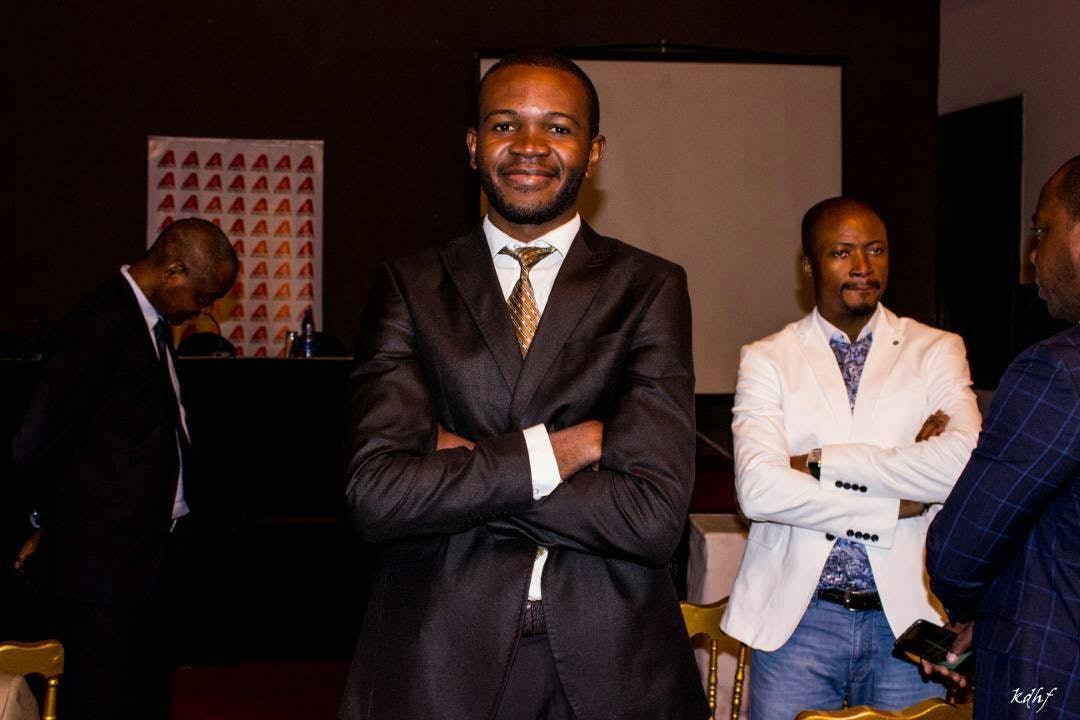NATO member states met in Bucharest in 2008 and declared Ukraine would one day join the alliance at the heart of transatlantic security. Sixteen years later, Vladimir Putin’s war in Ukraine rages on as NATO prepares to convene in Washington, D.C. this summer to mark the alliance’s 75th anniversary. Stakes are high in the shadow of the Russian invasion, and the Bucharest pledge remains unfulfilled. Decisions made at the Washington summit could pave the way for the future of the transatlantic relationship – or lock Europe into perpetual instability.
NATO took only limited action on the Ukraine question at last year’s summit in Vilnius, Lithuania, reaffirming that Kyiv would join the alliance but failing to define a timeline. Member states also waived the Membership Action Plan requirement for Ukraine and held the inaugural meeting of the Ukraine-NATO Council. Each of these steps made modest progress, but the alliance needs a bolder agenda for Washington. A Vilnius repeat wastes a critical opportunity to reassert the alliance’s credibility and lay the groundwork for a lasting peace.
Instead, NATO should start the process to admit Ukraine at the Washington summit. NATO could invite Ukraine to begin accession talks, the next step to becoming a member of the alliance. The collective defense guarantee would not take effect immediately, but the move would demonstrate that the West will stand with Ukraine for the long haul. In short, accession talks send a signal beyond mere rhetoric that Ukraine’s future is in NATO. So far, Russia has bet it can outlast not only Ukraine, but Western support. Beginning the accession process (which itself is lengthy), demonstrates a long-term commitment to Ukraine’s security and dashes Putin’s hopes of waiting out the war.
Inviting Ukraine to accession talks also hands NATO a strategic win. Throughout the war, Russia and outside observers alike have scrutinized the West for signs of division and weakness. In the early days of the war, Western unity held firm as governments enacted harsh sanctions on Russia and sent unprecedented aid to Ukraine. Now, cracks are beginning to form. NATO itself faces internal disagreement between pro-Ukraine-invitation states and more reluctant voices in the alliance, including the United States. Even if Russia remains mired in conflict in Ukraine, prolonged Western discord would hand Moscow a strategic victory. Conversely, inviting Ukraine to accession talks shows Russia its desire for a divided West will never come to fruition.
TIME TO ACT
NATO has no time to lose at the Washington summit. The odds favor Moscow over Kyiv in a long war in which Western military assistance is uncertain. From military might to economic output to industrial capacity, Russia dwarfs Ukraine. Russia is also willing to bear exceptionally high casualties, taking full advantage of its vast population. To be clear: Ukrainians have demonstrated remarkable skill, resilience, and unity in the face of overwhelming outside predictions of failure. Ukrainian military innovation, particularly in drone warfare, has also helped close the gap with the Russian Goliath. But Kyiv cannot afford to wait on a sluggish NATO decision when the numbers are stacked against it.
For this reason, NATO should not promise to admit Ukraine only once the war ends. This approach may seem tempting: move Ukraine toward membership while minimizing risks of triggering Article 5. But pledging to admit Ukraine after a ceasefire takes effect incentivizes Russia to drag out the war. With time on its side, Moscow can pummel Ukraine indefinitely, safe with the knowledge that Kyiv will never enjoy NATO security guarantees until the shooting war ends. Even if the alliance ultimately does not admit Ukraine during the war, ruling the option out restricts NATO and emboldens Russia. Importantly, such a pledge also gives Russia an effective veto on Ukrainian membership – just the sort of bargaining chip NATO assiduously kept out of Moscow’s reach in previous expansions of the alliance. Although superficially tempting, a postwar membership promise plays straight into Putin’s hand.
Ukraine may well achieve new breakthroughs on the battlefield. Indeed, it is scoring unprecedented wins in the Black Sea even as ground progress stalls. But NATO membership would remain imperative even if Ukraine regained 100% of its territory tomorrow. Far from a final throw of the dice, opening accession talks with Ukraine is perennially important for Kyiv’s security. Saddled with a belligerent neighbor who disputes its right to exist, Ukraine needs NATO as a bulwark against Russian aggression even after the war ends. Moscow may agree to some future ceasefire in good faith – or it may simply pause to regroup and launch another attack at a time of its choosing. Ukrainian NATO membership will help deter a future attack and raise the cost of a disingenuous peace process.
Military assistance remains essential for Ukraine and a good investment for the United States. But arms are only one of several key components of effective support. Russia’s comparative advantages make the so-called porcupine model – arming a country to the teeth to enhance its self-defense capabilities – an insufficient long-term strategy. Similarly, Ukraine recently signed bilateral security commitments with a handful of Western nations. From military aid commitments to defense industry cooperation, these agreements mark concrete progress, but they are no substitute for the institutional protection and gold standard security commitment of NATO. The alliance now has a crucial chance to act on Ukrainian membership. If it does not, Ukraine will lack a strong security arrangement, and Russia will be emboldened to continue the cycle of violence that has imperiled Ukraine and destabilized Europe for the past decade.
THE UNITED FRONT
Much of the trepidation on Ukrainian membership stems from Article 5, the collective defense clause in NATO’s founding treaty. Declaring an attack against any NATO member state “shall be considered an attack against them all,” Article 5 is the bedrock of the alliance’s deterrent power. Opening accession talks with Ukraine spotlights questions on how and when Article 5 will apply to Ukraine and what military obligations current NATO members will bear as a result. Fine detail work on the answers will occur during accession talks, with leaders closely monitoring military developments in Ukraine. Broadly, however, NATO must stay serious about interpreting the Article 5 commitment as a military response.
Article 5 does not specifically call for military action in the event of an attack on a NATO member. The Washington Treaty simply requires each member state to take “such action as it deems necessary.” Nevertheless, military action is the commonly understood definition, and NATO should stand by it. NATO members and belligerent powers alike understand that an attack on a member state will trigger an armed response. This understanding makes for a strong deterrent, prompting would-be aggressors to think twice before attacking a NATO member. Reinterpreting the Article 5 commitment to admit Ukraine would chip away at the very shield protecting current member states from Russian aggression.
Interpreting Article 5 as military aid to Ukraine wouldn’t just weaken the alliance’s deterrent – it would divide current member states. NATO members would be left scrambling to figure out whether their Article 5 guarantee constitutes an odd aid package or robust boots-on-the-ground action. Small frontline states like the Baltics would be particularly vulnerable to threats without the assurance of an armed NATO response. At a time when Western unity is so crucial, NATO can ill afford to undermine its own deterrent and sow distrust among its members.
In an ideal accession scenario, NATO could leave Article 5 entirely untouched. But modest flexibility may prove necessary if Ukraine is to join the alliance. In that case, NATO should clearly define case-by-case exceptions to Article 5 as a military response. If, for example, Russia controls some Ukrainian territory when Ukraine joins the alliance, that territory almost certainly will not be subject to the Article 5 guarantee even as member states refuse to formally recognize it as part of Russia. While suboptimal, this sort of one-time workaround may prove necessary for Kyiv’s accession and would not materially erode NATO’s deterrent power. In the big picture, formalizing Ukraine’s path to membership could give Russia a new opportunity to crack NATO by exploiting uncertainty around Article 5. Careful planning and minimal deviation from the spirit of the Washington Treaty would help NATO maintain a united front.
THE ROAD AHEAD
Ukraine joining NATO has long been a red line for Russia. No matter when Ukraine enters the alliance, its accession would create a perennial point of contention in relations between the West and Russia, an admittedly serious consequence. Russia is too large, too powerful, and too important a player in transnational issues for the West to comfortably consign it to rogue state status. But the alternative is a Europe under constant threat. Ukrainian membership may further deteriorate relations with Russia, but leaving Ukraine just short of membership will land Europe in a state of perpetual instability, to say nothing of the existential threat to Kyiv.
Critics of moving forward with Ukrainian membership argue that doing so would force Russia to escalate the war. While policymakers are right to weigh those risks with the utmost care, Russian escalation is not as likely as it may seem. In the past year, Moscow has declined to escalate in response to Ukrainian drone strikes on Russian territory as well as Kyiv’s devastating campaign on the Black Sea Fleet in Crimea, both actions the Kremlin previously warned against. Dire Russian threats to the West over supplying Ukraine with various advanced materiel like F-16 fighter aircraft also failed to materialize. Although Vladimir Putin continues to issue nuclear threats, most recently in an exchange with French President Emmanuel Macron, Moscow’s past inaction suggests this rhetoric is designed to deter Western support for Ukraine rather than communicate serious boundaries for escalation. Although the West must continue to carefully assess escalation risks, Russia’s behavior does not indicate it desires a wider or deeper war.
The current Ukraine question harkens back to the post-Cold War waves of NATO enlargement, reigniting many of the same expansion debates. But times have changed – and so have Ukraine and Russia themselves. Ukraine has set its course toward liberty and democracy, bolstered by key moments of people power and genuine democratic reform. Seeking Euro-Atlantic integration, Kyiv first began formal pursuit of NATO membership in 2008, reflecting the NATO commitment to recognize other countries’ agency to choose their security arrangements. Russia, on the other hand, has regressed into authoritarianism, acting upon a revisionist history to justify imperialistic claims to the former Soviet space.
NATO must assess the current situation unburdened by obsolete paradigms and act to preserve transatlantic security here and now. At the Washington summit, that means inviting Ukraine to accession talks, bringing the long-sought Bucharest pledge one crucial step closer to fruition.
Alexandra Pugh is a SMU Tower Scholar Fellow.



























